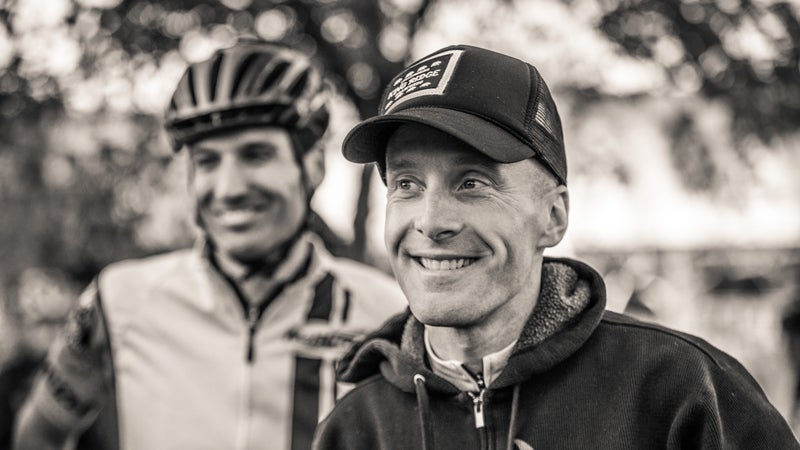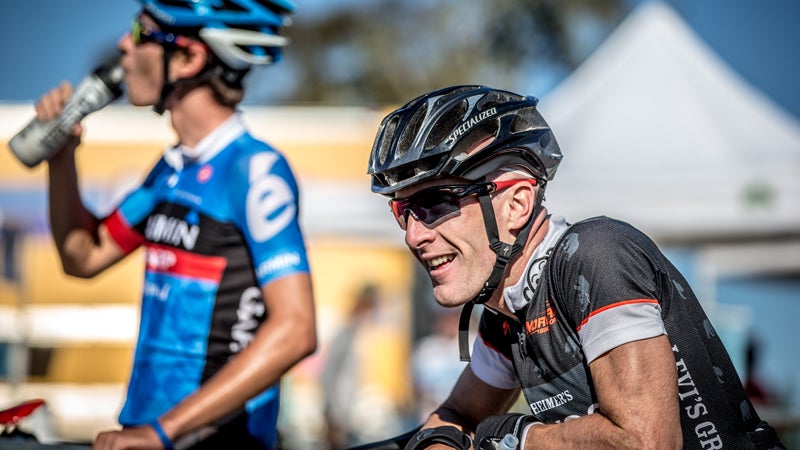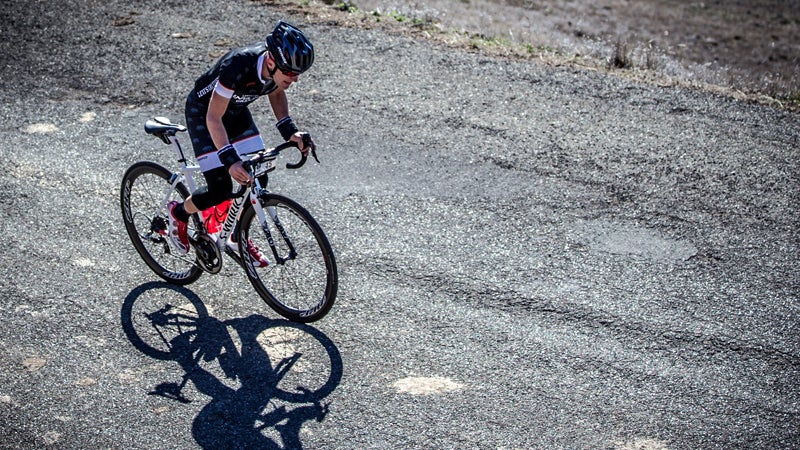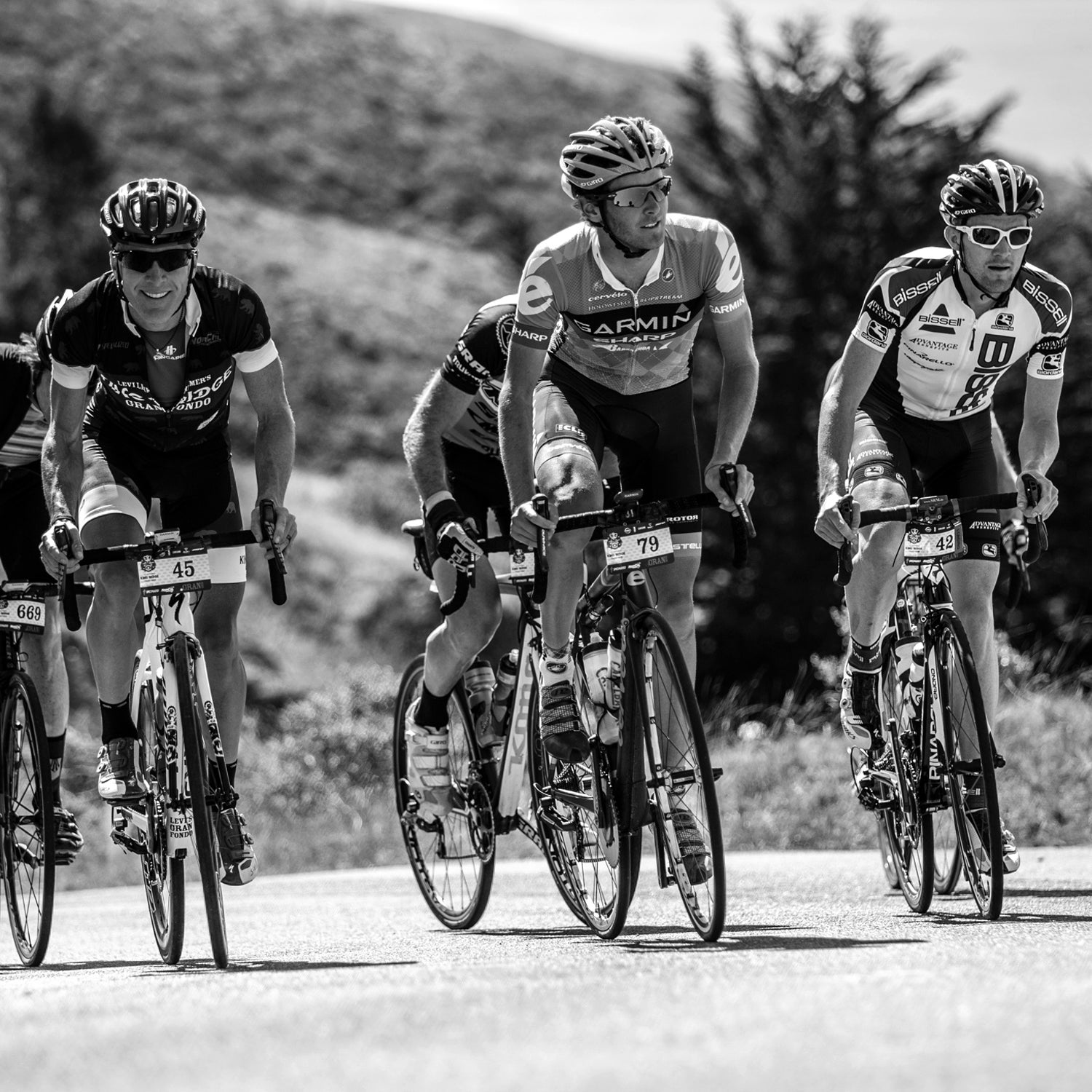On a spectacular day for a bike ride in Sonoma County, Levi Leipheimer is sitting on the side of the road adjusting his cleat position. We are in a group of five riders and less than an hour into a sixty-something mile route from the wine country town of Healdsburg to the Pacific Coast, but this is already the third time he has stopped to fine-tune some aspect of his setup. As a pro racer, Leipheimer was notorious for obsessively tinkering with his bike, so much so that he required a trusted personal mechanic in addition to the staff mechanics of his racing teams. HeŌĆÖs apparently unable to stop fiddling now, even in retirement, even on a casual ride with guys he could drop if he was pedaling a Big Wheel.
HeŌĆÖs also unable to stop riding. Though heŌĆÖs been retired from professional cycling for more than a year, Leipheimer still spends 15 to 20 hours a week on a bike, split evenly between road biking and mountain biking. He weighs the same as he did at the peak of his career (135 pounds). Arguably the best American rider over the last 15 years not named Lance Armstrong, Leipheimer finished third in the 2007 Tour de France, won the Tour of California three consecutive times between 2007 and 2010, took a bronze medal in the time trial at the Beijing Olympics, and won the inaugural USA Pro Cycling Challenge, in 2011. He probably had two years of racing left when the U.S. Anti-Doping Agency (USADA) served him with a six-month suspension in October 2012 for admitting to using performance enhancing drugs during the investigation of Armstrong and the US Postal Service pro cycling team. Leipheimer, who rode for US Postal early in his career, confessed to doping from 2000 to 2007, when he claims he abruptly stopped due to fears that heŌĆÖd be caught by improved testing methods.
Shortly after USADA announced the suspension, LeipheimerŌĆÖs team at the time, Omega Pharma-Quick Step, fired him. Many cycling pundits were furious, arguing that Leipheimer and others shouldnŌĆÖt be punished for telling the truth, while others complained that the riders who testified in the USADA probe got off too easy. Either way, the expectation was that Leipheimer would find a new team and resume racing in the spring. But while many cyclists caught up in the investigation did exactly that, no team signed him and he announced his retirement in May 2013, at age 39.

Since then, Leipheimer has been unemployed and, like other American cyclists who have been tainted as dopers, trying to move forward. Retirement is of course difficult for any professional athlete. Cyclists, who donŌĆÖt typically earn the kind of money that can last a lifetime, need to find new sources of income and often arenŌĆÖt very employable outside the biking industry. This puts Leipheimer and the other confessed cheaters of his generationŌĆöa list that includes Tyler Hamilton, George Hincapie, Floyd Landis, Christian Vande Velde, and David ZabriskieŌĆöin a particularly challenging position. The automatic move of a former pro is to capitalize on the image and associations he developed while racing. But how does that work if his career is marred by a giant asterisk?
I was particularly interested in putting this question to Leipheimer given the ongoing success of , an annual fall event in Sonoma County thatŌĆÖs widely considered the best Gran Fondo in the United States and among the best in the world. Launched in 2009, it attracts 7,500 riders and a number of sponsors, including Specialized, Nissan, and Clif Bar, and has generated $1.2 million in donations to charities since its inception. LeipheimerŌĆÖs confession and retirement has had essentially zero impact on its popularity.
LeviŌĆÖs Grand Fondo also recently became the title sponsor of the NorCal High School Cycling League, an interesting arrangement when you consider that it connects teen athletes with a guy who has confessed to using drugs to compete. If so many people and organizations are happy to align themselves with LeipheimerŌĆÖs namesake event, maybe theyŌĆÖre ready to forgive and forget more quickly than I expected.┬Ā
When I reached out to Leipheimer to talk about all this, he suggested we meet in Sonoma County and mix in a ride as well. If I could see the roads that inspired him to move there and then create the Gran Fondo, IŌĆÖd understand everything so much better.
About an hour before we got on our bikes, I met Leipheimer at Flying Goat Coffee in downtown Healdsburg. He was wearing jeans, a black Gran Fondo hoodie, and a San Francisco Giants baseball cap, which covered his bald┬Āhead. At 5ŌĆÖ7ŌĆØ and cyclist skinny, heŌĆÖs an inconspicuous guy. But if you sit directly across from him for a conversation, thereŌĆÖs a guarded intensity that comes out of his striking blue eyes and steadfast expression.
I asked him how heŌĆÖs been spending his time since retiring. What does he do to fill his days? He gave a roundabout answer that can be simplified to: not much.
ŌĆ£For many years during my racing, I thought about this time, when IŌĆÖd be done,ŌĆØ he said. ŌĆ£One thing I always knew is that I would need at least a year of decompression. Just do nothing.ŌĆØ
The constant pressures of professional cycling, he tells me, were exhausting, both on and off the bike. ŌĆ£You have to make a lot of sacrifices,ŌĆØ he said. ŌĆ£IŌĆÖve needed time to transition out of that and try to live a normal life.ŌĆØ
A big part of normal is simply sticking around Santa Rosa, the largest city in Sonoma County, where Leipheimer relocated in 1996, shortly after he turned pro. HeŌĆÖd grown up in Butte, Montana, with its long frigid winters, and instantly fell in love with SonomaŌĆÖs year-round cycling weather and diversity of terrain, from redwood forests to oak woodlands to oceanfront headlands. Leipheimer and his wife, Odessa Gunn, now own a hillside property outside Santa Rosa where they care for some two dozen rescued animalsŌĆöhorses, donkeys, pigs, goats, cats, dogs. Leipheimer plays a supporting role in that operation and also handles a lot of the household management while Gunn works on her nascent clothing line, The Gunn Collection. As he sees it, she did so much work for him when he was racing, now itŌĆÖs payback time.
Since his suspension, Leipheimer has had no income but has been able to live off the money he saved during his career. He gets zero dollars from the Gran Fondo and likes to call himself the eventŌĆÖs ŌĆ£number one volunteer.ŌĆØ When I asked him what heŌĆÖd put on a resume, he thinks for a moment, then says, ŌĆ£Advocate.ŌĆØ
As for his next move, he doesnŌĆÖt have clear answers. ŌĆ£ItŌĆÖs tough,ŌĆØ he said. ŌĆ£With biking, I found something that I completely loved and that I was really good at and had a lot of passion for. ItŌĆÖs not easy to replace that.ŌĆØ He paused for a moment, then added, ŌĆ£At some point, I either need to find something that IŌĆÖm that excited about orŌĆöwell, I guess thatŌĆÖs it. There is no ŌĆśor.ŌĆÖŌĆØ
He is very excited about the Gran Fondo, though his efforts on behalf of the ride, which is managed by Santa Rosa-based events organizing group Bike Monkey, donŌĆÖt amount to a full time gig. Still, he said, ŌĆ£ItŌĆÖs fulfilling for meŌĆöI have a purpose.ŌĆØ┬Ā

After admitting to doping, Leipheimer was worried that riders might abandon the Gran Fondo en masse. The fact that they didnŌĆÖt was incredibly uplifting for him. ŌĆ£It meant more than I can describe that people were still willing to come back and try to understand the situation and the choices I made, and not just write me off,ŌĆØ he said. ŌĆ£That they were willing to forgive and give me a second chance and shows how great the cycling community is.ŌĆØ
A good number of participants might also be simply be attracted to the ride itself and not think too much about the former pro itŌĆÖs named after. Leipheimer recognizes this. ŌĆ£What happened in the Tour de France and in the Tour of Spain those years is completely separate from my motivation for creating the Gran Fondo,ŌĆØ he added. ŌĆ£The event is about how much I love Sonoma County and how it forged me into a better rider.ŌĆØ
Indeed, the years Leipheimer spent getting better by grinding out miles on Sonoma roads are core to his self-identity and underlie his passion for the Gran Fondo, an event that draws cyclists willing to suffer through a grueling 103-mile route that includes 9,200 feet of climbing. He didnŌĆÖt have the natural talent of other top cyclists when he was young, he told me, so he outworked them. ŌĆ£When I was on the USA national amateur team, the coaches were like, ŌĆśYouŌĆÖre probably not going to be a pro,ŌĆÖŌĆØ he said. ŌĆ£And I proved them wrong. I worked hard and incrementally, over the years, I got better and better. Despite the asterisks, that still holds true. And I think the 7,500 people on the start line of the Gran Fondo understand that.ŌĆØ
The NorCal High School Cycling League apparently understands it as well. In a scene from a about the Grand Fondo, Leipheimer stands in front of a room full of teen riders and candidly answers their questions about doping, recalling the last time he transfused his own blood, at the 2007 Tour de France. ŌĆ£Somewhere along the line, little by little, I got to that point,ŌĆØ he tells them. ŌĆ£ThatŌĆÖs not something IŌĆÖm proud of. ItŌĆÖs not fun to live through.ŌĆØ At another moment in the film, he says he was unprepared to face the choice to dope when he first became a pro. By telling younger riders what he went through, he hopes ŌĆ£that when the time comes to make a decision like that, even itŌĆÖs outside the sport, theyŌĆÖre not blindsided. ItŌĆÖs giving them tools to go forward.ŌĆØ
Leipheimer has recently been advising a few NorCal riders advice on training and balancing cycling with life. He told me that when he ponders his futureŌĆöŌĆ£however long away that might beŌĆØŌĆöhe thinks about mentoring younger riders and coaching master racers. ŌĆ£One thing I did well in my career was pay attention to detailŌĆöI was very organized,ŌĆØ he said. ŌĆ£I think I have a good philosophy about training, so thatŌĆÖs one thing I can pass along.ŌĆØ
For now, though, the decompression continues. Back in 2012, in the days after news of LeipheimerŌĆÖs confession and suspension broke, he was in regular contact with some of the other pros whoŌĆÖd testified in the USADA investigation. ŌĆ£ItŌĆÖs so good to have those guys because we understand what each other is going through,ŌĆØ heŌĆÖd told a newspaper reporter at the time. These days, the contact is less frequent, though he said he texts with some guys, including Tom Danielson and George Hincapie. This past April, he ended up on a culinary-themed group ride with Christian Vande Velde and David Zabriskie. ŌĆ£There will always be a connection,ŌĆØ Leipheimer said. ŌĆ£ItŌĆÖs a brotherhood that comes from living the same experiences.ŌĆØ

Whatever they share in history, each of the retired American riders who have admitted using performance-enhancing drugs is charting his own path into the future. Tyler Hamilton published his last year and now has a . Hincapie, the most successful of the group, has a sporstwear line, a development team, a , and his own three-year old Gran Fondo in North Carolina. Others are more adrift. ŌĆ£ItŌĆÖs hard,ŌĆØ said Leipheimer. ŌĆ£They donŌĆÖt know what to do.ŌĆØ
As for the enduring impact the doper stigma will have on all of them, Leipheimer wasnŌĆÖt wiling to speculate. ŌĆ£I think the best answer is that only time will tell,ŌĆØ he said. ŌĆ£Only time is going to bring clarity and understanding about all of it. I think after a while it will make more sense.ŌĆØ
That sounded like a platitude, but Leipheimer was being sincere. ŌĆ£For myself, after what IŌĆÖve gone through, IŌĆÖve had no choice but to be a better person,ŌĆØ he added. ŌĆ£And I see that for cycling as a sport. ItŌĆÖs going to become stronger because of all this.ŌĆØ
Leipheimer dialed in his cleat, but now heŌĆÖs staring at my rear cassette, which is making some unsettling creaking and popping noises. We pull over to add some chain lube, but thereŌĆÖs no improvement.
ŌĆ£You need to take the cassette apart and check out the freewheel,ŌĆØ Leipheimer says with authority, before pedaling ahead, I presume, to escape the squawks of an imperfect drivetrain.
We roll on westward for several hours through extraordinary landscapes on a road that gets more pot-holed but also more empty by the mile. There are long stretches where we donŌĆÖt see a single car or structure. This is the kind of riding that seduced Leipheimer to move to Sonoma County almost 20 years ago and that molded him into one of the best cyclists of his generation. ItŌĆÖs the kind of riding he wanted to celebrate when he created the Gran Fondo.
Close to the coast, we reach a fork in the road. Three of us are headed to the right, for one more relatively easy climb followed by a blissful descent to Highway 1, where weŌĆÖll have dinner and then get a car ride home. Leipheimer and another rider are going left on a route to Santa Rosa that will have them climbing another 3,500 feet over 40 or so miles. Leipheimer seems ecstatic at this prospect. HeŌĆÖs smiling broadly as he departs, eager to embrace another three hours of blissful pain.


